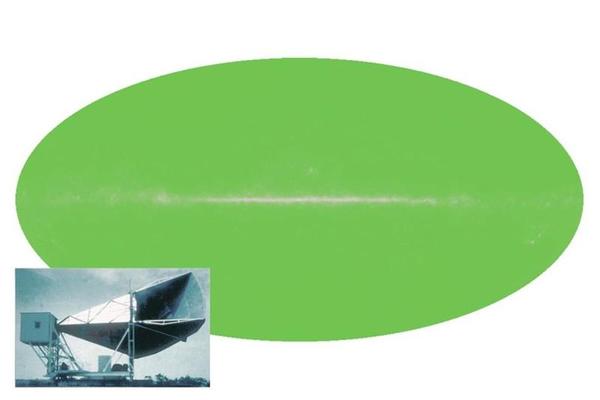How Anti-Religious Bias Prevented Scientists from Accepting the Big Bang

Today, the Big Bang model of cosmology is pretty much taken for Gospel, and for good reason. For more than fifty years, evidence gathered from all manner of sources has supported the notion that the Universe as we know it expanded from an infinitely dense singularity.
But things didn't always look so certain for the Big Bang. In its most nascent form, the idea was known as the hypothesis of the primeval atom, and it originated from an engineer turned soldier turned mathematician turned Catholic priest turned physicist by the name of Georges Lemaître. When Lemaître published his idea in the eminent journal Nature in 1931, a response to observational data suggesting that space was expanding, he ruffled a lot of feathers. As UC-San Diego professor of physics Brian Keating wrote in his recent book Losing the Nobel Prize, "Lemaître's model... upset the millennia-old orthodoxy of an eternal, unchanging cosmos. It clearly implied that everything had been smaller and denser in the past, and that the universe must itself have had a birth at a finite time in the past."
Besides questioning the status quo, Lemaître's primeval atom also had some glaring problems. For starters, there were hardly any means of testing it, a must for any would-be scientific theory. Moreover, it essentially suggested that all the matter in the Universe came from nothing, a flabbergasting claim. It also violated an accepted notion known as the perfect cosmological principle, which suggested that the Universe looks the same from any given point in space and time.
For these reasons, English astronomer Sir Fred Hoyle gathered with a few colleagues to formulate the Steady State theory of the cosmos. The idea kept the observable universe essentially the same in space and time, and it accounted for evidence suggesting that the universe is expanding by hypothesizing that matter is instead being created out of the fabric of space in between distant galaxies. Steady State didn't have the problems inherent to the notion of a primeval atom, and, as Keating wrote "it sure as hell didn't look like the creation narrative in Genesis 1:1."
As Keating continued, anti-religious sentiments provided underlying motivation to debunk Lemaître's theory.
Many atheist scientists were repulsed by the Big Bang's creationist overtones. According to Hoyle, it was cosmic chutzpah of the worst kind: "The reason why scientists like the 'big bang' is because they are overshadowed by the Book of Genesis." In contrast, the Steady State model was the rightful heir to the Copernican principle. It combined the banality of space with humanity's mediocrity in time. Thanks to Hoyle, humanity had humility.
Hoyle, however, did not. Over the decades, as more and more evidence lined up in favor of the Big Bang and against Steady State, the aging astronomer dug in his heels. Ironically, he behaved like the believing zealots he scorned, relentlessly defending his debunked theory until his death in 2001. Lemaître, on the other hand, remained humble and equivocal about the Big Bang throughout his life.
This scientific saga demonstrates that entrenched beliefs affect the nonreligious as well as the religious. In the end, bias should always bow to evidence.
Get the Space.com Newsletter
Breaking space news, the latest updates on rocket launches, skywatching events and more!
Originally published on RealClearScience.
Join our Space Forums to keep talking space on the latest missions, night sky and more! And if you have a news tip, correction or comment, let us know at: community@space.com.
Steven Ross Pomeroy studied zoology and conservation biology, but has long had a passion for journalism and writing. His work as writer and editor appears at RealClearScience’s website, where he covers anything that sparks his curiosity and love of learning. More of his writing can be found at Big Think, Slate, Science Now, Gizmodo, and Scientific American.










